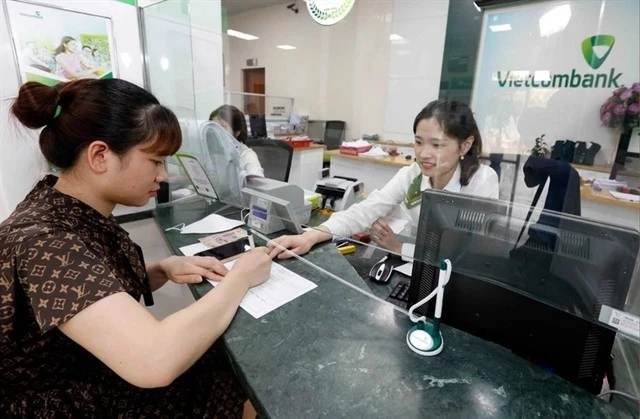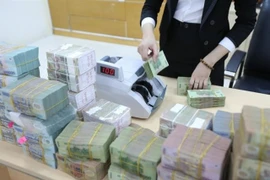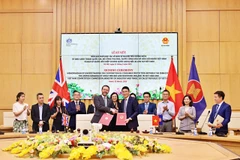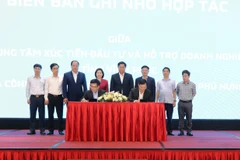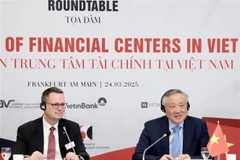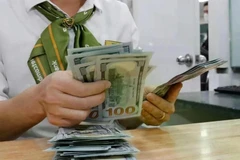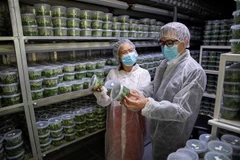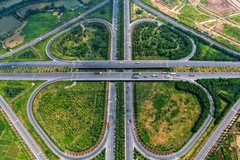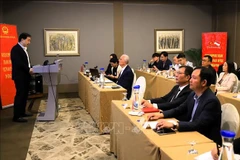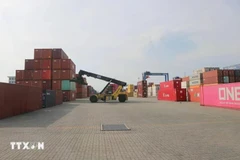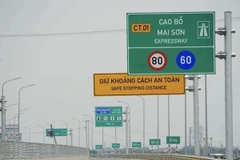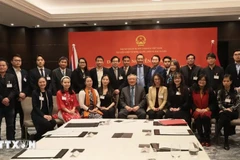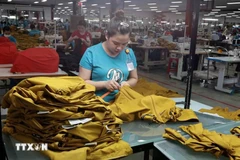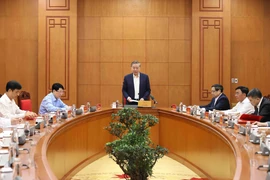Hanoi (VNS/VNA) - Vietnamese banks are ramping up share-based dividend payouts to increase charter capital, meet Basel III capital adequacy standards and enhance their competitive edge.
Since early March, many banks have unveiled plans to distribute profits and issue shares during their annual general meeting (AGM) season. This strategic move aims to reinforce financial capacity while complying with international safety standards, said economists and industry experts.
Vietcombank plans to use all remaining 2023 profits, over 22.77 trillion VND (891 million USD), to issue dividends in shares. This issuance, at a record 49.5% ratio, will increase its charter capital from 55.89 trillion VND to 83.56 trillion VND, the highest dividend payout rate in the bank’s history, surpassing the 35% issued in 2016. VietinBank intends to raise its charter capital from 53.7 trillion VND to 77.67 trillion VND through a share issuance of up to 2.4 billion shares at a 44.64% ratio.
This plan, upon approval, will use retained earnings, reserves and past cash dividends from 2009 to 2016. BIDV plans to issue 123.8 million shares via private placement to professional investors in Q1/2025 at 38,800 VND per share, aiming to raise over 4.8 trillion VND. If successful, BIDV’s charter capital will exceed 70.2 trillion VND. MB (Military Bank) is set to issue nearly 796 million shares for a 15% stock dividend, increasing its charter capital from 53.06 trillion VND to 61.02 trillion VND.
Additionally, MB will privately issue 62 million shares to raise another 620 billion VND. SHB (Saigon-Hanoi Bank) announced an 11% stock dividend from 2023 profits, pushing its charter capital to 40.66 trillion VND. Nam A Bank plans to issue over 343 million shares for a 25% stock dividend, raising 4.28 trillion VND and increasing its charter capital from 13.73 trillion VND to 18 trillion VND.
Stock dividends are becoming the preferred choice over cash payouts, allowing banks to retain funds for technology investment, credit expansion, and capital adequacy improvement. This aligns with State Bank of Vietnam (SBV) guidance on capital reinforcement to strengthen the financial system.
Mounting pressure
Banks aim to boost their capital adequacy ratio (CAR), a critical metric for risk resilience, as they work toward full compliance with Basel III standards, which demand higher capital buffers to safeguard against economic shocks.
Experts said that higher charter capital enables banks to increase lending limits, expand credit and finance large-scale projects. With fierce domestic competition and growing foreign financial institution presence, capital expansion enhances credibility, market position and investment in technology and services. Raising capital through stock dividends also helps banks preserve cash flow for reinvestment while delivering value to shareholders through increased shareholdings. This is particularly vital for maintaining liquidity amid economic recovery.
Chairman of BIDV Phan Duc Tu said State-owned banks must bolster their financial strength to support the economy. With a projected 16% credit growth target, commercial banks must expand their equity base accordingly.
“This places significant pressure on commercial banks to sustain rapid economic growth while adhering to global regulatory standards. We urge the National Assembly and the Government to allow banks to retain profits for capital increases, as previously permitted,” he said.
Economist Dr Can Van Luc pointed out that despite aggressive capital-raising efforts, Vietnam's CAR remains below regional averages. Increasing charter capital is essential not only for Basel III compliance but also for risk management and financial resilience.
Dr Nguyen Huu Huan from the University of Economics HCM City said capital increases are crucial for addressing rising non-performing loans (NPLs). Retaining earnings for equity growth helps optimise returns for shareholders, especially given the recent surge in bank stock prices./.
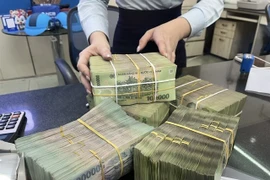
Banks begin reducing deposit interest rates in response to PM’s direction
Several commercial banks have started reducing deposit interest rates by 0.1 to 0.4 percentage points in response to the Prime Minister’s direction to lower rates to help achieve the Government’s 8% growth target in 2025.
